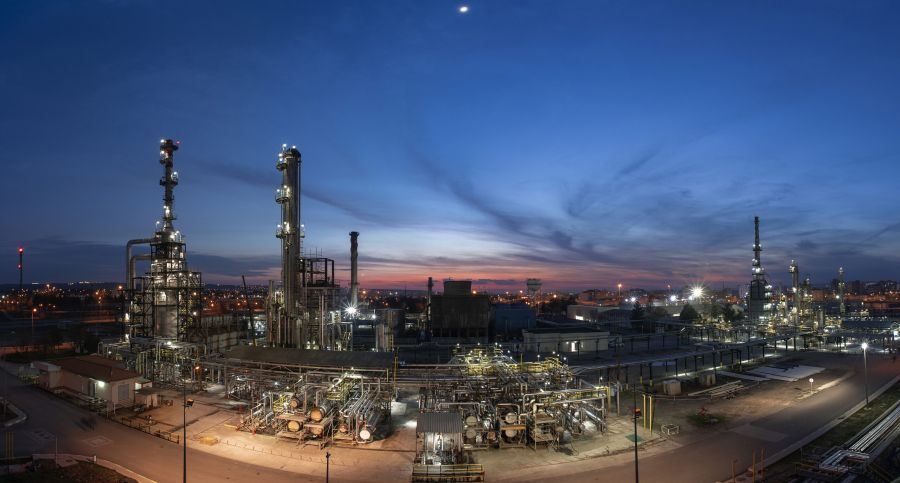Pilots
Demonstration at TUPRAS
HERMES project will be implemented at Tüpraş’s İzmit Refinery, which has an annual capacity of 11.3 million tons and a Nelson Complexity Index of 14.5. The desulfurization unit at this refinery operates using the Claus process, which converts hydrogen sulfide (H2S) gas into elemental sulfur and water. In this unit, hydrogen gas (H2) is produced from natural gas through steam reforming, and sulfur is converted into hydrogen sulfide (H2S) gas. As part of the HERMES project, a hydrogen separation unit will be integrated into the desulfurization unit. In the desulfurization unit, a H2S removal unit will be installed to clean the H2S gas. Once the H2S is removed and the prototype system is applied to the unit, the clean hydrogen will be used in refinery processes, improving operational efficiency.
In the project, the H2 separation unit is planned to be integrated into the desulfurization unit line at the refinery. Although the flows on the line contain less than 20% H2, there is a high percentage of H2S in the composition content. In the case of the testing of Prototype 1 with Pd-based membranes, the H2 containing stream at the output from the line, needs to be separated from the toxic H2S gas. For this reason, a H2S removal unit will be installed on the line in order to ensure efficient operation of the H2 separation unit. In the case of Prototype 1 and the testing of the CMS membranes, validation will be performed, bypassing the H2S removal unit to test the membranes in the presence of H2S. After the H2 separation system is installed. H2 gas mixture with high H2S content going to the desulphurization unit. After H2S is removed and other pollutant gases are separated, the amount of clean hydrogen to be used in the refinery processes will increase and operational efficiency will be improved.
Demonstration at SNAM
The SNAM’s demonstration site is a pilot plant for testing innovative prototypes of membrane separation system located in North of Italy. A closed-loop configuration has been selected for reducing the raw materials needed for the tests, minimizing their cost. The facility is composed of all the necessary equipment for carrying out long-term tests separating up to 100 kg/day of hydrogen and instruments for analysing the performances of the prototypes in industrially relevant conditions, allowing for the enhancement of their Technology Readiness Level (TRL).
The first use case that will be tested in the SNAM facility will be the purification of Natural Hydrogen. This kind of hydrogen is produced in the undergrounds or naturally via water-mineral interactions or induced through CO2 injections, resulting a clean energy vector. The natural gas extracted from the underground has a purity of about 97% vol. due to the presence of impurities (e.g., methane, nitrogen). Its purification is consequently pivotal to enable their usage.
The second use case to be tested in the SNAM facility will be the separation of hydrogen from syngas mixture resulting from biomass gasification units. The gasification of biological compounds, such as agricultural and forestry residues, represents a sustainable pathway for hydrogen production, contributing to the reduction of greenhouse gas emissions and the transition to a low-carbon economy. However, the concentration of hydrogen in the products mixture resulting from the gasification of biomass is below the 20% vol. Consequently, an efficient separation is needed to achieve a pure hydrogen stream that can be used for energetical and industrial purposes.

